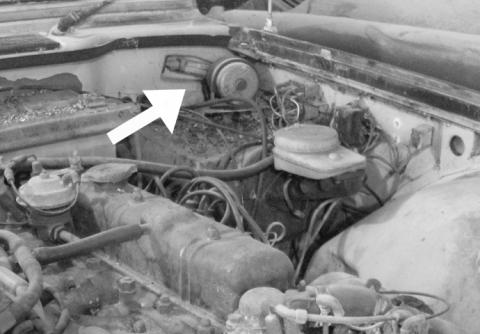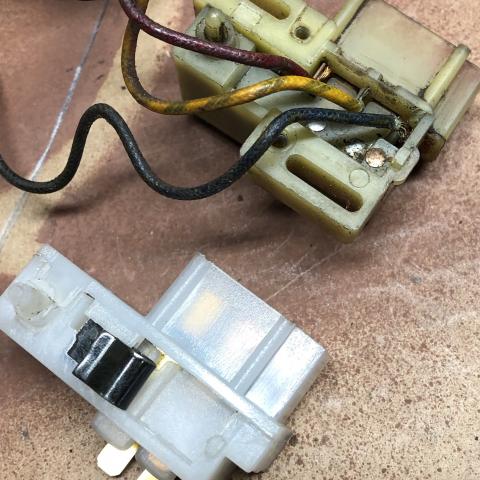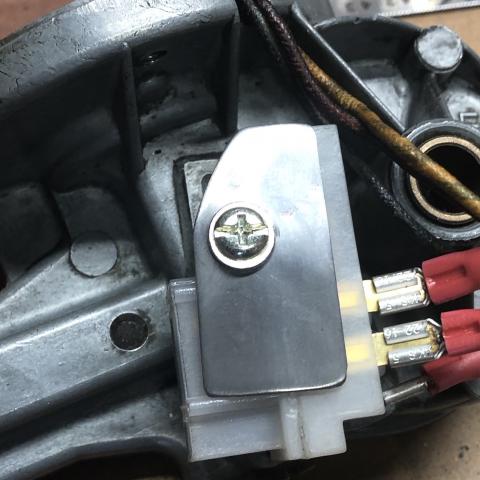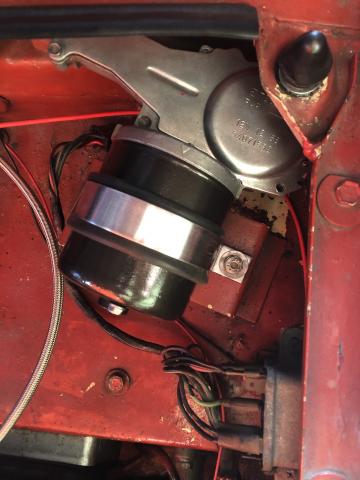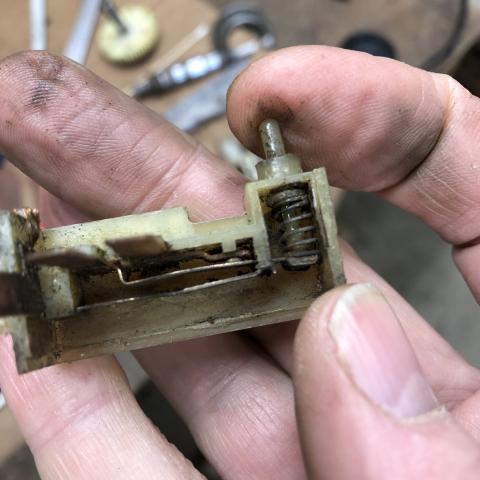This isn't the project update i was hoping to be writing.
I was supposed to be just wrapping up a full engine and gearbox rebuild about now, but it seemed best to put that on hold while we stay at home for the pandemic. Instead, i went back to my list of small jobs as a way to keep busy: sew a new shifter boot, a couple of drops of oil to quiet down the noisy tach, and next on the list: the wipers won't park on their own.
I didn't get any before pictures, I guess i'm a little out of practice with the blog. You'll just have to imagine a grimy lump of a wiper motor that was painted red when a previous owner neglected to mask it off when respraying the car.
Removing the motor requires removing the top cover. That's a tight squeeze, but the screws are course, so it's not many turns. It's pretty much impossible to reach the farthest screw until you remove the hood bumper cone. Then, lift the cable end off of the motor gear housing, remove the mounting strap, and the whole unit comes off.
Though the motor was generally working, the wiper parking switch is on the bottom of the unit, and you have to almost completely dismantle it before you can access the switch mounting screws. A good time for a thorough cleaning and regreasing anyway.
This is the inside view of the gears. This is the clean version, otherwise you'd just see nothing but a blob of brown grease. The motor has a worm drive that turns a gear with an eccentric peg. That creates the oscillating motion for the rack that connects to the wiper arms.
The parking switch mounts on the bottom of the case, with a peg that rides along a cam on the bottom of the round gear. I tried working some electronic cleaner into the switch to see if it was just gummed up, but no joy, so I ordered a new one. On the early wiper motor, like mine, the switch is soldered to the motor brushes. Later motors have spade connectors here, so i'll change my connectors to work with the new switch. You may also notice a difference in the way they mount.
Since the new switch lacked the screw mounting holes of the original, i made a small hold-down plate for the one mounting hole that's still accessible. Between that and the relatively snug fit, i think it'll be secure.
Since the brushes and bushings were all in good shape, it was mainly a cleanup job from here. I repainted the motor case and re-plated the gear cover and screws. This is the reinstalled unit, working correctly and looking a lot better. The whole project cost $16 for the switch and $4 for a new rubber mounting pad.
Update! May 2
One of the dangers of doing car work in the cold (other than not feeling when you smash a finger) is that sometimes things work differently in the cold than when it's warmer out. When i first assembled the wiper motor, it worked and parked correctly, but the next warm day when i was out i tried the wipers again, and they wouldn't shut off. The mechanism would turn off, but coast right past the cam and start up again.
Looking at the switch setup, it seems like it actuated in a lower spot than the old switch, so the power wasn't disconnected as long as it needed to be. This could be related to the different mounting setup, though it fit flush on the case, so unless the newer style case had a thinner bottom plate, i'm not sure this was it.
I could have fixed it a few different ways: adding some kind of spacer to raise the cam higher on the gear, put some kind of extension on the switch peg so it would be pushed further in, or mill out the gear case's mounting area and change it to the clip-style mount to match the new switch. Any of these would probably increase the time the switch was off and fix the problem.
Instead, i first decided to take the old switch apart to see if i could fix that instead:
It was filthy and corroded, but intact and it cleaned up ok. I had to add connectors to the contacts, since i'd installed connectors on the brush wires and now they'd be too short to re-solder in place. Once i did that, i tested it out, and sure enough, the old switch worked fine. I could have saved myself a lot of trouble if i'd just tried that first. Lesson learned.

